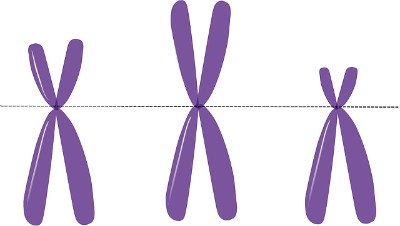Familiarization with the common terms in genetics is important in understanding the Mendelian laws or principles, and the role of genetic factors in plant growth and development.
Mendel’s parental “factor” is now referred to by the common term gene.
Gene is probably the most commonly used term in genetics and so deserves more elaboration.
The genes consist of deoxyribonucleic acid or DNA, so-called the chemical basis of heredity.
They are carried in the chromosomes, the physical basis of heredity, within the cell.
The chromosomes are those that appear under magnification as coiled, contracted, threadlike bodies in the nucleus at a certain stage of cell division in diploid somatic cells.
In diploid organisms like humans the chromosomes, and the genes, normally occur in two forms: haploid or singly (1N) in the sexual cells or gametes, and diploid or in pair (2N) in the somatic cells.
Somatic cells refer to the body cells, meaning all cells to the exclusion of the sexual cells or gametes.
Read more

